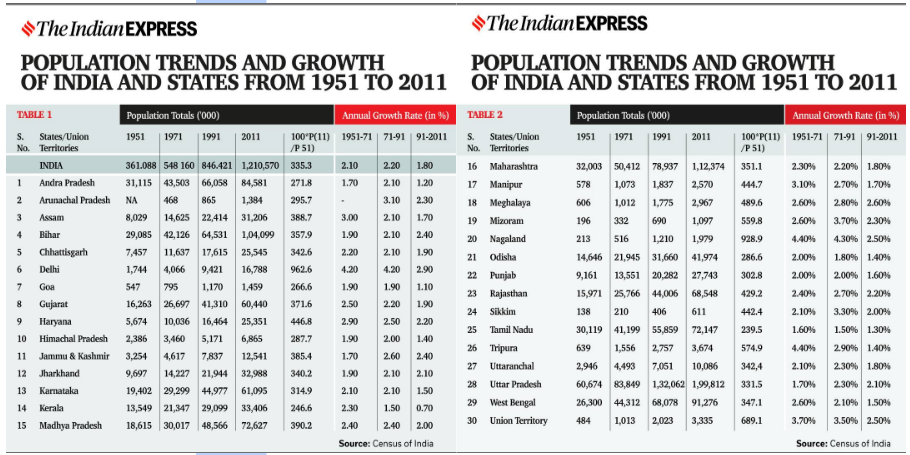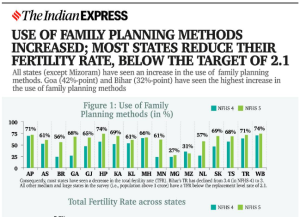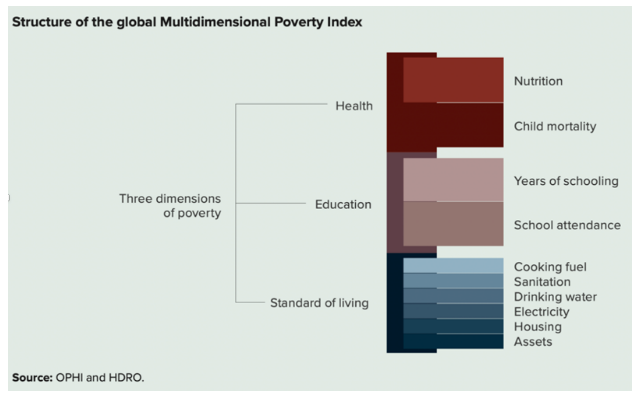Context: Recently, World Population Day was observed on 11th July.
Objective: To draw the attention of the masses to the urgency of population control and to encourage them to work together to re-establish harmony and unity with the natural environment.
Analysis of India’s Population Trend


Concerns Related to High Population
Steps taken to Regulate Population in India
| National Population Policy, 1976 | National Population Policy, 2000 |
|
|
| National Population Policy 2000: Key Achievements
·The Total Fertility Rate has declined from 2.9 in 2005 to 2.0 in 2019 (SRS). ·28 out of 36 States/UTs have already achieved the replacement level fertility of 2.1 or less. ·The Crude Birth Rate has declined from 23.8 to 20.0 from 2005 to 2018 (SRS). |
|
Government Scheme to Regulate Population
Role of State Government
Other countries’ population control laws
Way Forward
News Source: India Today
Context:
The International Financial Services Centres Authority (IFSCA) and Climate Policy Initiative – India (CPI) have signed a Memorandum of Understanding (MoU) for mutual assistance and cooperation to increase mobilization of global sustainable capital flows into India.
About the news:
About IFSCA
About Climate Policy Initiative:
News Source: pib
Context: Recently, the Delhi High Court held that there was no merit in the appeal filed by PepsiCo over the patent rights for its unique potato variety.
About the case
FL 2027
What is the PPV&FR Act?
Grounds for revocation under Section 34 of the PPV&FR Act
Reason to reject the appeal
What is the new variety and extant variety?
News Source: The Hindu
Context:

About:
Features:
|
Understanding The Term Large language model:
Chat GPT-4:
|
What is High Modernism?
How top down planning may lead to negative impacts?
|
Why is high modernism a problem when designing AI?
What do giant AIs abstract away?
|
Case Study implying lack of multi-dimensionality in gAI
|
Can diversity help?
Ways to reduce the risks posed by gAIs:
Promising Research Directions:
Way Forward:
Conclusion:
News Source: The Hindu
Context: The Supreme Court (SC) prima facie disagreed with the legal stand of the Election Commission (EC) of India that it can only begin the delimitation process in Manipur, Assam, Nagaland and Arunachal Pradesh after only getting an authorisation from the Centre.
Key points
Section 8A of Representation of the People Act, 1950.
What is delimitation?
Delimitation Commission
How is delimitation supposed to be carried out?
Previous delimitation exercises
News Source: The Hindu
Context: The latest update of the global Multidimensional Poverty Index (MPI) was released by the United Nations Development Programme (UNDP).
Multidimensional Poverty Index (MPI):

Findings of MPI about the World
Findings about India
Progress in 2019-21 as compared to 2005-06
| Indicators | Status in 2005-06 | Status in 2019-21 |
| Deprivation of Nutrition | 44.3% | 11.8% |
| Child mortality | 4.5% | 1.5% |
| Deprivation of Cooking fuel | 52.9% | 13.9% |
| Deprivation of sanitation | 50.4% | 11.3% |
| Drinking water indicator | 16.4% | 2.7% |
| Deprivation of electricity | 29% | 2.1% |
| Deprivation of housing | 44.9% | 13.6% |
News Source: The Hindu
Context: Forty three new implementing partners were recently empanelled under SAMARTH scheme additional training target of 75,000 beneficiaries
Scheme for Capacity Building in Textiles Sector
News Source: pib
SC Verdict on Newsclick Shows Adherence to Due Pro...
Stay Invested: On Chabahar and India-Iran Relation...
Credit Rating Agencies, Impact on India’s De...
Catapulting Indian Biopharma Industry
Globalisation Under Threat, US Import Tariffs Have...
Global Report on Hypertension, Global Insights and...
<div class="new-fform">
</div>
